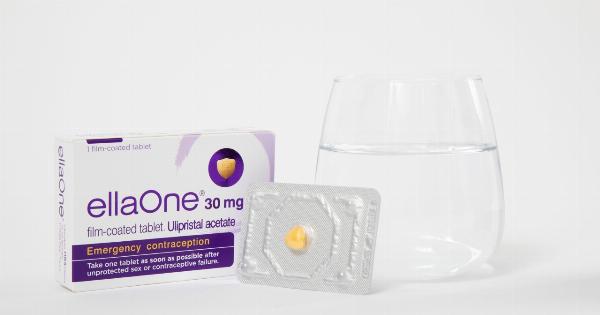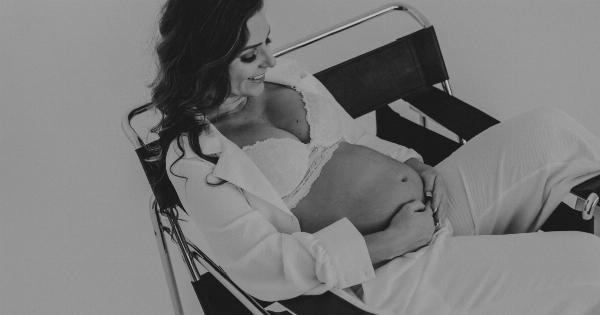Knowing when your fertile window begins and ends is key if you’re trying to conceive. The fertile window is the time when your body is most likely to release an egg, and it’s the best time to have sex if you want to get pregnant.
However, if you’re not trying to conceive, understanding your fertile window can help you avoid pregnancy. In this article, we will discuss how to determine your fertile window.
What Is the Fertile Window?
Your fertile window is the period of time when you’re most likely to get pregnant. It typically starts 5 days before ovulation and ends on the day of ovulation. Ovulation is when your ovaries release a mature egg that can be fertilized by sperm.
Sperm can live in your reproductive tract for up to 5 days, so having sex during your fertile window can result in pregnancy.
How to Track Your Fertile Window
There are several methods you can use to determine your fertile window. Here are some of the most popular options:.
1. Track Your Menstrual Cycle
One of the easiest ways to track your fertile window is to monitor your menstrual cycle. Ovulation typically occurs on day 14 of a 28-day cycle, so you can estimate your fertile window based on your cycle length.
For example, if you have a 28-day cycle, your fertile window is likely to start on day 10 and end on day 14. If you have a longer or shorter cycle, you may need to adjust your calculations.
2. Use an Ovulation Predictor Kit (OPK)
An ovulation predictor kit (OPK) is a test strip that detects the surge in luteinizing hormone (LH) that occurs before ovulation.
LH is the hormone that triggers ovulation, so monitoring your LH levels can help you predict when you’re about to ovulate. OPKs are easy to use and can be purchased at most drugstores. They typically come with instructions on how to use them and how to interpret the results.
3. Monitor Your Basal Body Temperature (BBT)
Basal body temperature (BBT) is the lowest temperature your body reaches while at rest. Tracking your BBT can help you determine when you’ve ovulated, as your BBT typically rises by 0.5-1 degree Fahrenheit after ovulation.
However, it’s important to note that your BBT is less accurate than other methods of tracking your fertile window, as it only indicates that ovulation has already occurred.
4. Use a Fertility App
There are several fertility apps available that can help you track your menstrual cycle, ovulation, and fertile window. These apps typically allow you to input your cycle length, basal body temperature, and any other relevant information.
They then use this data to estimate your fertile window and provide you with alerts when you’re likely to be ovulating.
5. Monitor Your Cervical Mucus
Your cervical mucus changes throughout your menstrual cycle and can be a good indicator of when you’re fertile. During your fertile window, your cervical mucus tends to become more abundant, slippery, and stretchy.
This makes it easier for sperm to swim through your reproductive tract and reach an egg. Monitoring your cervical mucus can be done by checking it daily and recording any changes in texture or volume.
How to Increase Your Chances of Getting Pregnant During Your Fertile Window
If you’re trying to conceive, there are several steps you can take to boost your chances of getting pregnant during your fertile window:.
- Have sex every other day during your fertile window
- Use positions that allow for deep penetration
- Elevate your hips after sex to help the sperm reach your cervix
- Avoid using lubricants that can hinder sperm movement
- Maintain a healthy diet and exercise regimen
- Minimize stress levels
When to See a Doctor
If you’ve been trying to conceive for more than a year without success, or if you’re over the age of 35 and have been trying for 6 months, it may be time to see a fertility doctor.
A fertility doctor can help you pinpoint any issues that may be causing infertility and recommend appropriate treatments. Additionally, if you experience severe menstrual cramps, heavy bleeding, or any other unusual symptoms during your menstrual cycle, it’s important to seek medical attention.
Conclusion
Knowing your fertile window is important if you’re trying to conceive or want to avoid pregnancy.
There are several methods you can use to determine your fertile window, including tracking your menstrual cycle, using an ovulation predictor kit, monitoring your basal body temperature, using a fertility app, and monitoring your cervical mucus. If you’re trying to conceive, taking steps to increase your chances of getting pregnant during your fertile window can help boost your odds of success.



























